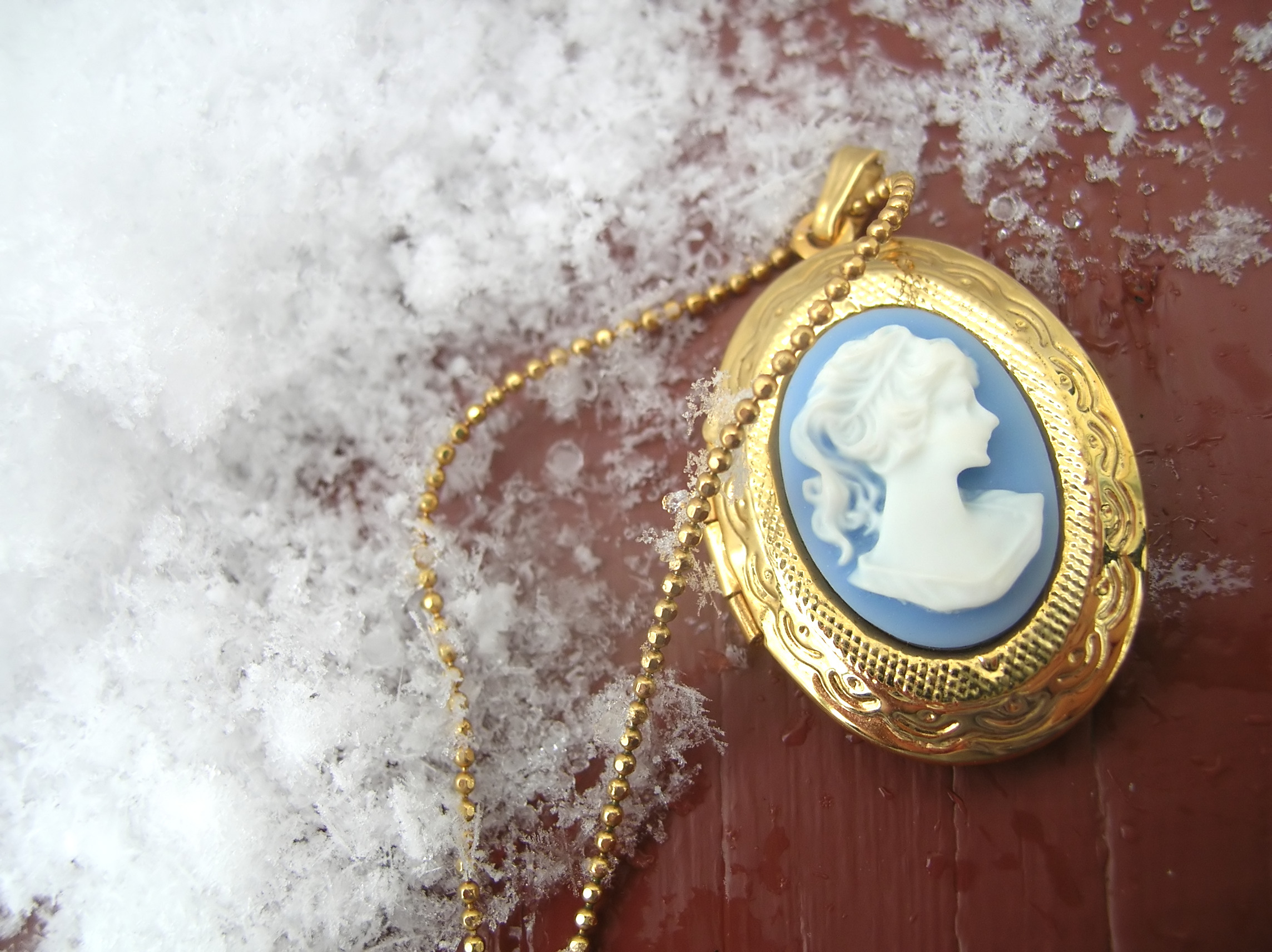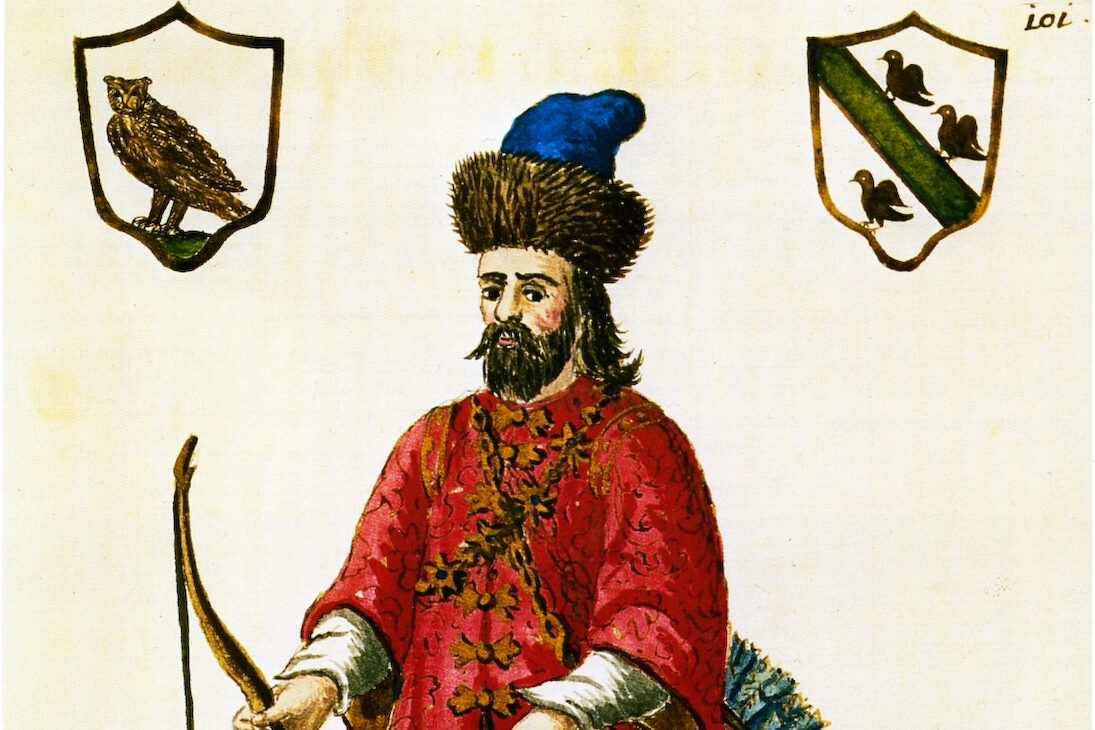The first “jewelers” date back to the Upper Paleolithic. Sometimes between 40 thousand and 10 thousand years before Christ, stones, ivory, and seashells started to be used as jewels, symbols of spirituality or power, apotropaic objects, decorations. The history of gold began some 5 to 6 thousand years ago. Gold reflected light, it was simple to mold, it melted at low temperatures, it was resistant and did not rust, which meant it could remain unaltered through time: it was love at first sight. Thanks to the great civilizations of the Nile, the Tigris, and the Euphrates, jewelry became ornamental and a signifier of social diversification. An expression of wealth, of course, but also of state-of-the-art techniques, of refined creativity, and of incredible beauty. There were gold bracelets as thin as a sheet of paper, rings enriched with precious stones, filigree earrings, large brooches and clasps made using the granulation method. Jewels became more detailed and complex, thanks to the addition of glass paste, enamels, and lapislazuli.
The Etruscans introduced embossed work, stamping, and gold settings for rings. Then came Greek elegance and Roman ostentation: jewelry was worn all over the body, from the hair to the ankles, and at all ages. Necklaces were so long they had to be worn in layers around the neck and would still reach women’s hips. It was then, also, that rings came to symbolize love or a promise of it. Wearing jewelry didn’t only show the wealth of the wearer, but also the power of the Roman Empire, which ensured an abundance of precious stones was always available on the Roman market. Topazes, sapphires, rough diamonds, and emeralds would reach the capital from every corner of the conquered world. By the 3rd century AD, amber, rubies, and amethysts would shine brightly into true artistic creations. In the Middle Ages, new techniques to set stones in metal and to use enamels were discovered; these were also the times when gems began being associated with magic and were believed to affect the lives of those who wore them. In this period, jewelry making became important also for the Church: reliquaries, pendants, ancient rosary beads.
During the Renaissance, thanks to the development of new trade routes, goldsmith art became more important. The colonization of the American continent meant that precious stones and metals were more easily available, and in larger quantities, and not only gold and silver but also rare pearls and jade.
Italian museums, today, are filled with beautiful, very detailed jewelry made with basic instruments but great experience and care, the characteristics that made the real difference. History of art is replete with such manifestations of beauty, which was present even in the most unsuspected times. During the barbaric invasions, brooches, diadems, hilts, polychrome clasps became common, just like marvelous jewels like the Iron Crown, kept in the Chapel of Theodelinda, in the Duomo of Monza, the Triumph of King Agilulf, a gilt embossed bronze forehead plate, in Florence (both dating back to the 7th century AD), or Desiderius’ Cross in Brescia (8th-9th century).
And this is without mentioning the Renaissance. May it suffice to say that artists such as Brunelleschi, Ghiberti, Donatello, and Luca della Robbia began their artistic training in goldsmiths’ ateliers.
Goldsmith art has ancient origins and a long history but it is especially the intertwining of technique, precious materials, and creativity. It is, in one word, beauty.
It represents, still today, one of our excellences, so much so that the Italian pavilion at the Dubai Expo has recently dedicated an exhibition to it. Indeed, goldsmith art is both the prestigious result of a series of techniques like embossing, engraving fusion, filigree, and valuable commercial product, representative of Italy in the world of elegance, glamor, and fashion.
The most renowned areas for jewelry production are in Piemonte (Valenza Po), Veneto (Vicenza) and Toscana (Arezzo). The first, home to 745 businesses and some 5 thousand employees, is the oldest and is known for high-end jewelry. In Valenza, we find Maison Damiani, the largest of Maison Bulgari’s factories in Europe. Next year, Cartier is also opening its own factory there. Vicenza focuses on more delicate products, while Bassano on simpler jewels. Arezzo (1200 businesses and 8 thousand employees) focuses on the medium-low segment of the market. Important poles are also in Milan and Campania: Lombardia counts 4 thousand businesses, 12.7% of the national total, with some 11 thousand people working for them. Of course, the fashion world is key for the sector in the region. Campania’s goldsmith art is all about traditional craftsmanship and precious and natural stones.
Craftsmanship and talent remain the main competitive factor everywhere. The goldsmith is an artist and Italian jewelry is a work of art: this is why it is so popular around the world. Art, innovation, technology, history, culture, tradition, perfection, elegance, all in a piece of art you can wear.
I primi “gioiellieri” risalgono al Paleolitico Superiore. Tra il 40mila e il 10mila avanti Cristo pietre, avorio, conchiglie cominciano ad essere impiegati come monili, simboli religiosi e di potere, oggetti apotropaici, decorazioni. La storia dell’oro risale a 5-6mila anni fa. Le proprietà fisiche di questo metallo, la sua lucentezza, la facilità di lavorazione, il basso punto di fusione, l’enorme resistenza, il fatto stesso che non arrugginisca e resti inalterato nel tempo, lo hanno subito fatto amare. Con le grandi civiltà nella Valle del Nilo, del Tigri e dell’Eufrate i gioielli diventano ornamento, amuleti, strumenti di diversificazione sociale. Espressione di ricchezza ma anche testimonianza di perfezione tecnica, di raffinata creatività, di sorprendente bellezza. Bracciali come sottili lamine d’oro, anelli con gemme incastonate, orecchini con lavorazione a filigrana, spilloni e fibule lavorati con la granulazione. I preziosi si arricchiscono con intarsi di paste vitree, smalti e lapislazzuli. Gli Etruschi aggiunsero la tecnica dello sbalzo, della stampiglia, degli anelli con castone aureo.
Poi arrivarono la raffinatezza ellenica e l’ostentazione romana: i gioielli venivano portati su tutto il corpo, dai capelli alle caviglie, e indossati a tutte le età. Si arrivò a mettere collane così lunghe che si dovevano avvolgere con più giri intorno al collo prima di ricadere sui fianchi ma anche a usare anelli come pegni d’amore e fidanzamento. L’esibizione rimarcava lo status sociale di chi li indossava ma anche la potenza dell’Impero romano, che garantiva un’abbondanza di pietre preziose: topazi, zaffiri, diamanti grezzi e smeraldi arrivavano da tutte le terre conquistate. Dal terzo secolo d.C. l’ambra, il rubino e l’ametista brillarono dentro oggetti ormai prepotentemente artistici.
Nel Medioevo si trovarono nuovi metodi di castonatura e di smaltatura. Si diffuse l’idea che le pietre preziose e le gemme avessero poteri magici e fossero in grado di influenzare le vite degli uomini mentre i gioielli, oltre ad adornare principi e dame, fiorirono in ambito religioso: reliquiari, medaglioni, antichi rosari. Con il Rinascimento, e il grande sviluppo delle rotte commerciali, l’arte orafa ebbe un importante rilancio. La colonizzazione dell’America portò a una maggiore disponibilità di materiali preziosi. Non solo oro e argento in abbondanza ma anche giada e perle rare.
I musei italiani oggi sono ricchi di monili che svelano meravigliose finiture ottenute con strumenti semplici dove però l’esperienza e la cura del dettaglio hanno sempre fatto la differenza.
Tutta la storia dell’arte è contrassegnata da questa manifestazione di bellezza. Persino nelle epoche più insospettabili come durante il periodo barbarico quando si diffusero fibule, diademi, else, fibbie di cinturoni policromi, gioielli mirabili e famosi come la Corona Ferrea conservata nella Cappella di Teodolinda nel Museo del Duomo di Monza o il Trionfo di re Agilulfo a Firenze, una lamina in bronzo dorato a sbalzo (entrambe del VII sec.) o ancora, la croce di Desiderio a Brescia (VIII-IX sec.). Per non parlare dei risultati di pregio indiscusso prodotti nei periodi di splendore come il Rinascimento. Basti dire che artisti di fama internazionale come Brunelleschi, Ghiberti, Donatello e Luca della Robbia, si formarono proprio nelle botteghe fiorentine di oreficeria.
L’arte orafa ha origini antichissime, una storia lunghissima ed è un intreccio di tecnica, materiali pregiati e creatività. Ma sostanzialmente è bellezza.
Rappresenta ancora oggi una delle eccellenze del Made in Italy tanto che il Padiglione Italia all’Expo di Dubai ha recentemente dedicato una mostra a quest’eccellenza artigianale che è sia un’espressione della tradizione artistica e culturale del Belpaese, frutto pregiato di lavorazioni come il cesello, la filigrana, la fusione, lo sbalzo, sia un nobile prodotto commerciale che un marchio che porta l’Italia nel mondo dell’eleganza, del glamour, delle sfilate di moda.
I distretti orafi più strutturati si trovano in Piemonte (Valenza Po), Veneto (Vicenza) e Toscana (Arezzo). Il primo con 745 imprese e 5mila addetti è il più antico, ha un orientamento più artigianale delle produzioni ma una gamma di preziosi corrispondente a una fascia di prezzo più elevata. Non a caso qui hanno sede la Maison Damiani, lo stabilimento produttivo più grande d’Europa della Maison Bulgari, e l’anno prossimo si attende il nuovo stabilimento di Cartier.
Vicenza conta su lavorazioni più fini e tendenti alla gioielleria, mentre Bassano si occupa di lavorazioni semplici. Arezzo (1200 aziende e 8mila addetti) ha lavorazioni industriali rivolte alla fascia medio-bassa del mercato. Si aggiungono poi i poli di Milano e della Campania. In Lombardia ci sono 4mila imprese, pari al 12,7% del totale nazionale, che danno lavoro a 11mila persone. Qui si beneficia del forte traino dell’alta moda. L’oreficeria campana invece, si caratterizza per prodotti artigianali di alta qualità con pietre preziose e gemme naturali.
In ogni caso è la maestria il principale fattore competitivo. Più che un artigiano, l’orafo è un artista e il gioiello italiano un’opera d’arte ed è per questo che riesce a conquistare le boutique di lusso in tutto il mondo. Arte, innovazione, tecnologia, storia, cultura, tradizione, perfezione, eleganza tutto in un prodotto che ha un grande vantaggio: la gioielleria è arte da indossare.





























